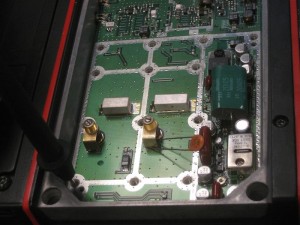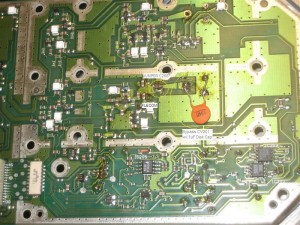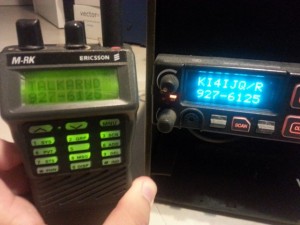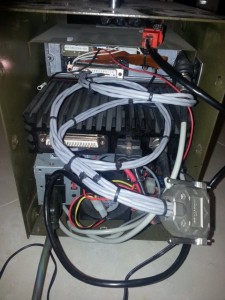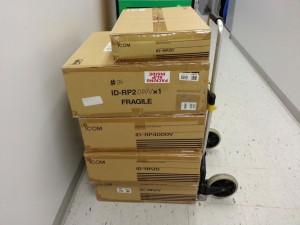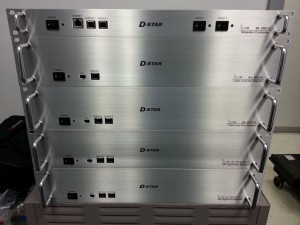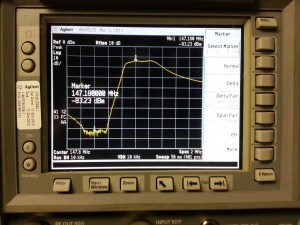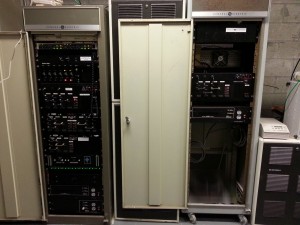Amateur Radio
902 Orion RX
A long time ago I wanted to make a 33cm Ham repeater using nothing but Orion radios… the 900Mhz Orion will TX in 927 just fine but I was told no Orion will RX in 902… so I decided to try and modify the 800Mhz Orion to RX in 902Mhz because I wanted an all-Orion repeater…
I honestly can’t remember much of what I did seeing as this was 6~7 years ago but it all began with some trial and error (mostly error)
Playing with caps till I managed to get the VCO Line to 5v…
Success!
Obviously this isn’t an ideal part but it did the job… solder in place…
Result…
Finally ended up integrating it into a little /\/\otorola desktop repeater cabinet with a home-made dual radio cable that also goes to a DB-25 to interface with a CAT-2oo repeater controller (not pictured was used later in another repeater) along with a 900Mhz Orion for TX along with a small power supply and a mobile duplexer… the 800Mhz PA was removed to save a bit of weight… used the flex ribbon from the PA for it’s DB37 interface and a coax pigtail from an MTX or something like that can’t remember…
800Mhz Orion RX’ing 902Mhz
Since it was setup in a dual-radio config if you TX in Talk Around the 900Mhz Orion will show RX’ing
Home-Made Dual Radio cable along with the DB-25 connector for going to the CAT-200 Repeater Controller (missing)
Two things that are not really mentioned is you must remove/replace (or in my case just bypass) the filter on the RX side or the radio will be incredibly deaf… bypassing the filter the radio is about -118 ~ -120 or so which is not bad… additionally if you do use a disk cap (ideally you would use a proper cap) you need to glue it down with some hot glue or something if not the radio will be incredibly micro phonic…
D-Star*
Well as if I needed more projects to work on – the Dade Radio Club has asked me to take over their ICom D-Star repeater project…
Sadly I know chances are nobody will ever use any of this stuff but hey at least it looks really pretty!
DE KI4IJQ/R
Finally got the new repeater on the air, now just have to get remote sites for voting… the goal is county-wide hand held coverage… but have to start somewhere…
Stinky hamfest…
And this time it isn’t the people! No – went to the Orlando “Hamcation” and spotted this!
Definitely the most interesting thing I’ve seen at a hamfest in a while!
Mr & Mrs Marathon
As per the usual I was at the Miami Marathon as I am every year way too early in the morning as a volunteer communicator… as usual there were interesting people walking/running by… considering I was almost at the end of the 26 mile course seeing these two go by was impressive to say the least!
“New” KI4IJQ Repeater
So I finally got around to working on the permanent 147.180Mhz repeater… originally the 147.345Mhz repeater this was supposed to be the permanent repeater, the current one was just temporary… so after 5 or so years in service I figure its about time the real one went up 🙂
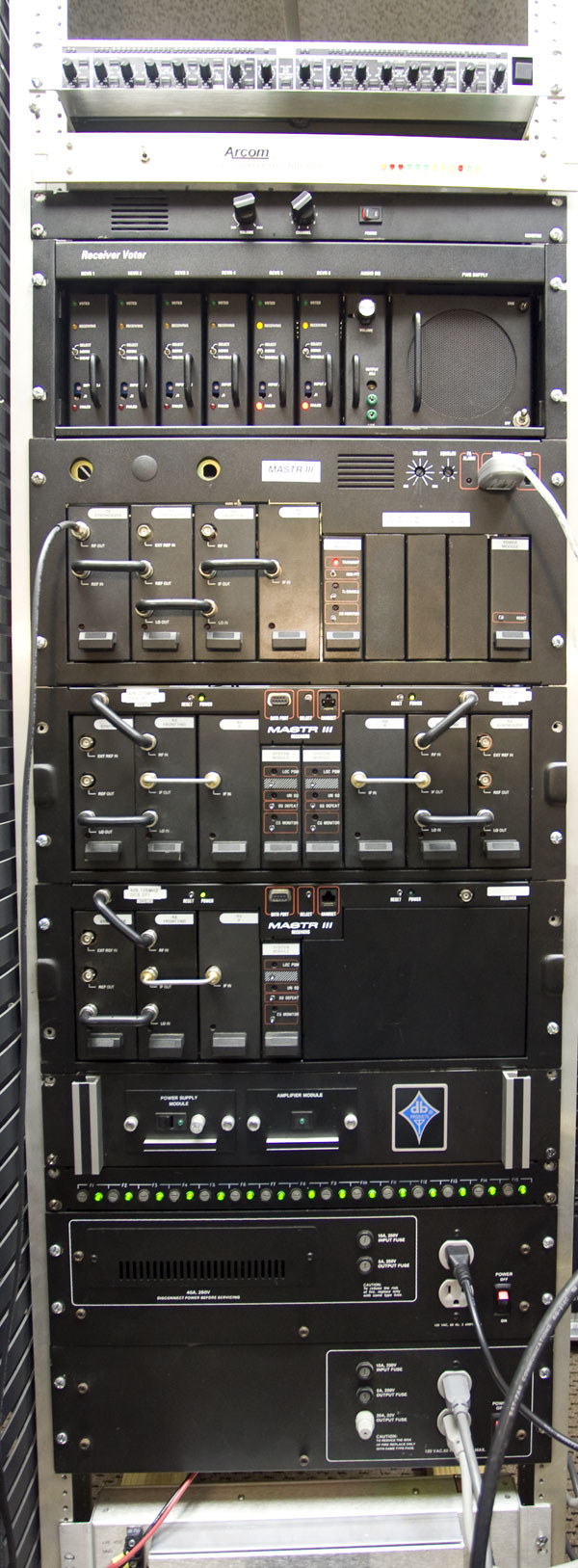
so here is the basic layout of the repeater… from top to bottom
1) Audio Compressor – Will normalize (expand/compress) incoming audio before the repeater controller
2) Arcom RC-210 repeater controller – Not sure if this will be the final controller, thinking of getting an S-Com 7330 since I am not totally happy with the Arcom
3) Audio panel – this panel just has a speaker, volume control and selector switch that lets you listen to the audio coming out of each receiver
4) Receiver Voter – basically an audio comparator, as part of a voting system the voter is what decides which receiver is getting the “best” signal and “votes” it, aka passes the audio to the controller
5) Mastr III – this is the actual VHF 2M repeater…
6) Mastr III Receiver Shelf – this has 2x UHF receivers for the satellite receive site links
7) Mastr III Receiver Shelf – this has 1x UHF receiver for satellite receive site links
8 ) UHF Preamplifier/multi coupler – shares one UHF antenna to the 3x UHF receivers
9) Fuse Panel – distributes the high current 12V to all the low current 12V equipment
10) 12V high current power supply – powers everything in the shelf minus any power amplifiers
11) 26V high current power supply – powers the Mastr III VHF PA
12) VHF Mastr III PA – 10mW in 110W out – set to 15W out via software PA pot setting… will be driving a 250W TPL PA
so first thing I had to do was program the all the shelfs…

mmm DOS
then tune the RX Synthesizer modules…

Red light indicates no lock. There is a tunable capacitor to tweak the VCO.

using an extender card you tweak the VCO until the red light turns off… then you have to tune the front end…

basically a 5 slug filter in front of the receiver to increase selectivity

tuning it requires the use of a signal generator… as you get closer to getting it properly tuned you keep turning down your signal until you get it to “ideal”… which ideally should be at -120dBm or better
next up is the transmitter

using the Mastr III DOS software and the PA PWR setting I tuned the Mastr III’s PA to 15W so it could drive a secondary PA, a 250W TPL
I did this for 2 reasons, 1 the Mastr III PA is a lot more difficult/expensive to repair/replace than the TPL, so the TPL will act as a “sacrificial lamb” if anything catastrophic happens to the repeater… 2 once the system gets its satellite receive sites its receive footprint is going to be pretty large, so we need to compensate with more transmit power

done for now… all thats left is to use the service monitor and a TIMS set to set all the audio levels

